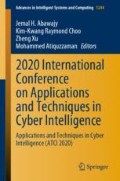Abstract
In the context of the continuous development of technology and economy, the construction industry is also constantly developing and changing, and the application of artificial intelligence technology in landscape architecture art is one of the achievements. The application of artificial intelligence technology to landscape architecture art design is conducive to the further improvement of people’s quality of life and work. Based on this, this paper analyzes the application of artificial intelligence technology in landscape architecture art design. This paper conducts research through the combination of literature review method and experimental comparison method, and summarizes relevant domestic and foreign literature materials to find that artificial intelligence technology in landscape architecture art design The application in the main has the following results: application in landscape architecture art design, application in landscape architecture plan, application in landscape architecture construction, application in landscape architecture construction, application in waterscape design, applications in floor paving, applications in visual lighting, and interior design applications. Through the comparison between two design companies in a certain area for the comparison of landscape architecture art design experiments, it is concluded that the use of artificial intelligence technology for architectural art design has the following advantages: the use of artificial intelligence technology can create multiple, simple operation can be used Complete drawing and innovative art forms. The results of this paper show that the use of artificial intelligence technology for landscape architecture art design has more advantages.
Access this chapter
Tax calculation will be finalised at checkout
Purchases are for personal use only
References
Dragisic, M., Bnin-Bninski, A.: The application models of the topological principle of continuous deformation in the architectural design process. Facta Universitatis 15(3), 453–464 (2017)
Nema, M.K., Khare, D., Chandniha, S.K.: Application of artificial intelligence to estimate the reference evapotranspiration in sub-humid Doon valley. Appl. Water Sci. 7(5), 1–8 (2017)
Sarangapani, C., Patange, A., Bourke, P.: Recent advances in the application of cold plasma technology in foods. Rev. Food Sci. Technol. 9(1), 609 (2018)
Xiao, Y., Sun, X., Wang, L.: The application of 3D printing technology for simultaneous orthognathic surgery and mandibular contour osteoplasty in the treatment of craniofacial deformities. Aesthetic Plast. Surg. 41(6), 1–12 (2017)
Yang, Y.J., Bang, C.S.: Application of artificial intelligence in gastroenterology. World J. Gastroenterol. 25(14), 1666–1683 (2019)
Tang, Z., Wang, W., Chen, G., et al.: Research on the application of aerodynamic models in modern design of aerodynamic experiments. Acta Aerodynamica Sinica 35(2), 172–176 (2017)
Askar, A., Ardakani, M., Majdzade, R.: Bridging gaps in health information systems: a case study from Somaliland, Somalia. Al Majallah Al Sihhiyah LI Sharq Al Mutawassit 23(11), 764 (2018)
Yin, J., Tan, Q.: Study on urban efficiency measurement and spatiotemporal evolution of Cities in Northwest China based on the DEA–Malmquist model. Sustainability 11, 434 (2019)
Levent, A., Kamil, K., George, G., et al.: Broom: application for non-redundant storage of high throughput sequencing data. Bioinformatics 35(1), 143–145 (2019)
Jiang, X.R., Bachorik, P.S.: Apoprotein A-I measured by radial immunodiffusion in heparin-MnCl2 supernates. Clin. Chem. 32(6), 930–933 (1986)
Author information
Authors and Affiliations
Corresponding author
Editor information
Editors and Affiliations
Rights and permissions
Copyright information
© 2021 The Editor(s) (if applicable) and The Author(s), under exclusive license to Springer Nature Switzerland AG
About this paper
Cite this paper
Wang, S. (2021). Application Research of Artificial Intelligence Technology in Landscape Architectural Art Design. In: Abawajy, J., Choo, KK., Xu, Z., Atiquzzaman, M. (eds) 2020 International Conference on Applications and Techniques in Cyber Intelligence. ATCI 2020. Advances in Intelligent Systems and Computing, vol 1244. Springer, Cham. https://doi.org/10.1007/978-3-030-53980-1_51
Download citation
DOI: https://doi.org/10.1007/978-3-030-53980-1_51
Published:
Publisher Name: Springer, Cham
Print ISBN: 978-3-030-53979-5
Online ISBN: 978-3-030-53980-1
eBook Packages: Intelligent Technologies and RoboticsIntelligent Technologies and Robotics (R0)

